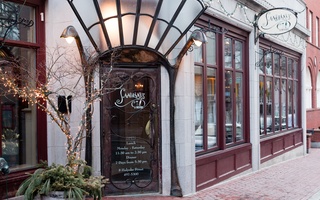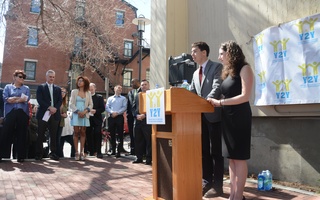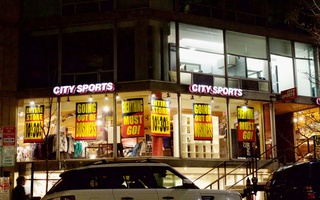In recent days, Harvard students have not shied away from voicing their disappointment over the closing of Yogurtland, the only self-service frozen yogurt restaurant in Harvard Square. Though many of the melancholic sentiments offered by students regarding the popular froyo place may have been made in jest, the event is interesting on a deeper level. The closing of the popular California chain’s Cambridge location says something about the gentrification and its effect on the Square.
When it opened, Yogurtland itself was a symbol of the phenomenon that has now forced its departure. Yogurtland, along with other recent additions to Harvard Square, stands in contrast to the greasy restaurants and dive bars that characterize many college towns. Tasty Burger, Felipe’s Taqueria with its newly renovated rooftop bar, Shake Shack, and others have added an extra air of glitz to an area that over the past decades has become less hippie and more yuppie.
Now, rents have risen even higher: Yogurtland came in because Harvard Square was popular, but its increased popularity seems to have pushed the chain out. This is a fitting time to reflect on what Harvard Square was, what it has become, and what it will be in the future.
According to the Harvard Square Business Association, the Square was founded in 1630 as the center of Newtowne, intended to serve as the capital of the Massachusetts Bay Colony. Since then, Harvard Square has been in a continual state of transformation: Once a bastion of radical thought in the 1960s and 70s, Harvard Square in recent decades has witnessed rapid expansion. The opening of the Charles Hotel in 1985, for example, sparked the development of the surrounding commercial area. Today, the identity of the Square continues to evolve as rents and prices increase.
It is difficult and perhaps dishonest to assign ownership to the Square. Those affiliated with Harvard might be tempted to claim primacy, but Cambridge residents often disagree. Plans for the renovation of the Smith Campus Center have been delayed twice, with some residents concerned that the construction will prove to be detrimental to Cantabrigians unaffiliated with the College. Nevertheless, despite differing opinions on Harvard’s further expansion into the Square, it is impossible to deny the profound impact the University has had on the surrounding area and its composition.
As Harvard has grown into a popular tourist destination, Harvard Square has further gentrified, shifting the mix of stores and restaurants that populate the area. It is a problem common across the city—with the price of a single-family home in Cambridge rising to nearly $1.4 million, the city is seeking to triple fees on commercial buildings to help pay for subsidies on more than 1,000 housing units across the city. The demise of Yogurtland is symbolic of the larger concerns facing the Square and this city; its closing provides a welcome opportunity to step back and consider the past, present, and future of our neighborhood and its culture.
Read more in Opinion
In Defense of The Harvard Douche

















